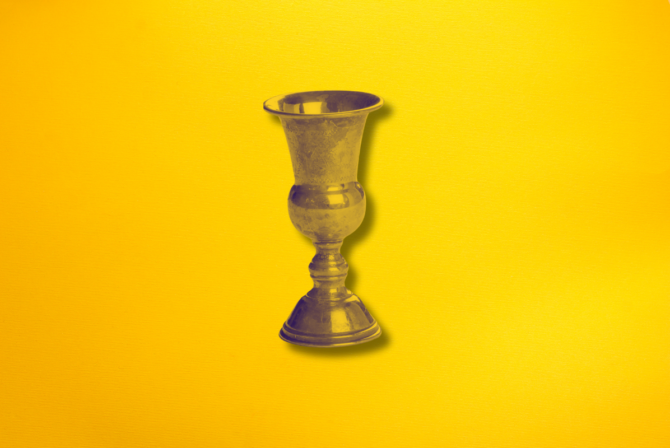The Western Wall or Kotel, archaeologically impressive though it may be, is not holy to me in a conventional sense–and recent events have made it less holy in my eyes, though not in the ways you might think.
Many, many Jews consider the Western Wall to be holy because it is the oldest remaining structure from the time of the Temple. It’s not, mind you, even a wall of the Temple itself–it’s just a retaining wall around the Temple Mount. To me, this makes the wall interesting, poignant, historically critical, and relevant–but not inherently holy.
I’ve always been bemused because I do not understand why Jews of a more liberal persuasion–including myself in that group–would be so invested in praying there.
Is there really a “direct line” of sorts from the site of the Western Wall to God? As someone greatly invested in the portable power of rabbinic Judaism, I’d say no. The Temple was a site where, centuries ago, people sacrificed animals and acted out other rites incredibly far removed from our modern paths of devotion, introspection, and prayer. It was a place where I, as a member of “Yisrael” as opposed to “Cohen” or “Levi,” would have had my access and proximity to rites restricted (which actually sounds kind of familiar, strangely enough).
Its holiness, I think, comes from how we have treated it as a people: as a place for the ingathering of the exiles, a place that is a focal point for Judaism. And the behavior of many of those who consider this site holy over this past week, however, shows that they do not understand what true holiness is.
The past week saw arrests, by Israeli police, of the Women of the Wall. These are Jewish women who pray together in front of the Kotel. Ten of these women–some American, some women rabbis–were taken into custody earlier this week by the Israeli police. Why? For wearing tallit, prayer shawls, as they prayed–something prohibited by a 2003 Israeli Supreme Court ruling that forbids women from carrying a Torah or wearing prayer shawls there..
Personally, I don’t believe in wearing a tallis or a kipa while I pray. Nor do I believe in being kept separate from men while I pray. But I respect each one of these things as the expressions of devotion of Jews whose viewpoints are different from mine. And there is room for both of these things on the man-made Western Wall Plaza–a place that is holy only if and because we make it so.
The Kotel becomes tainted when it is, as it has been before in Jewish history, the setting for sinat chinam, causeless hatred, between Jews themselves. Rabbinic commentators have said that both the First and Second Temple were destroyed because of, and as a byproduct of, the angry vitriol directed by Jews against other Jews. Isn’t it ironic, then, that we find ourselves in the same place centuries later, literally and figuratively?
Stones are not holy. We, as Jews, no matter what stripe, are not supposed to worship idols. We are not supposed to put any god before God. Focusing on what women are wearing and refusing to see their kavanah, the intent behind their prayer, is a disgrace to God and a disgrace to the people of Israel–the people of Israel, who include men and women.
What the literalists fail to comprehend is that holiness is less likely to be found in dirt and rocks than it is within people. And what is truly holy is what was spat on, by those who claimed they were preserving holiness, at the Western Wall this week.
On Friday night, let’s light the candles and think about that which is truly holy: the people of Israel, surviving years of persecution and praying according to different customs and traditions, but praying with devotion and love to the same God. I believe in a God who expects more from us.







